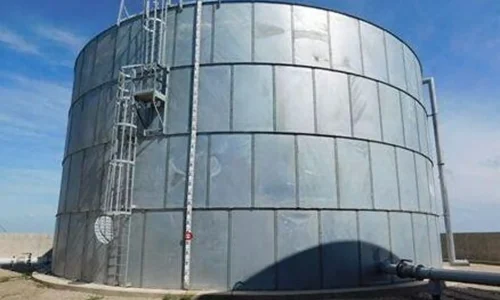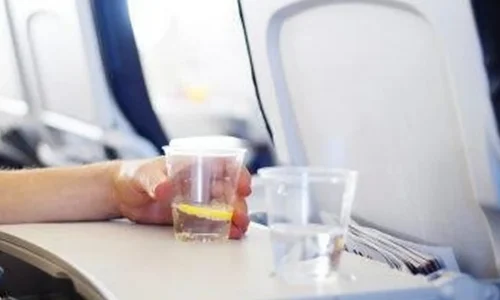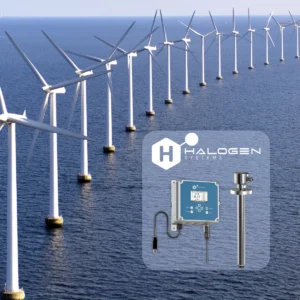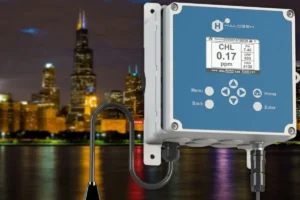

Legionella and Cruise Ship Water Monitoring
Cruise Ships Have a Potable Water Problem
The warning letter sent by the FDA to a cruise line operator (Jan 24, 2023) is being treated as a shot across the bow for the entire Cruise Travel industry. Legionella was found in potable water samples within passenger and crew cabin shower heads, galley faucet aerators, potable water tanks, (and more) on two separate ships and in the case of one ship, at two different times.
Legionella is a dangerous and hard-to-kill pathogen that is better to mitigate before it gets a foothold. That makes consistent monitoring of stored water an imperative. Operators can’t treat what they don’t know. Yet maintaining consistency can be difficult. Most monitoring processes are either highly-manual (swabs and grab samples) or are maintenance-heavy and temperamental (DPD membrane and reagent side-stream sensors). DPD and old-tech amperometric analyzers require consistent flows with no bumps in pressure or vibrations. That makes them ill-suited for cruise-ship use with unavoidable issues such as periodic fresh-water fill-ups, long at-dock periods that can lead to Legionella-friendly temperatures in the hot water systems, as well as the periodic system flushes needed to avoid water stagnation.
Contamination can be introduced at the dock source, but many issues result from not having enough residual chlorine in circulation to wipe out any bio-contamination and from allowing temperatures to stay in Legionella-friendly zones for too long. As noted in the quote above, cruise operators must maintain consistent processes for monitoring both onboard potable water as well as water brought in via dock-side sources.
The FDA letter specifically recommends monitoring potable water parameters, such as free or total chlorine residual, temperature, and pH on the vessel when docked and not in operation as well as when in operation. A single Halogen MP5™ multi-parameter sensor can monitor those parameters plus Conductivity and ORP, both of which can be helpful in determining mitigation strategies for any bio-contamination in the potable water systems of cruise ships. Unaffected by flow or pressure, the Halogen MP5™ is a good choice for solutions aimed at solving the issues around cruise ship water monitoring. Halogen is working with partners to create options for ship owners. Let us know if you’d like to know more.
Many Applications Benefit from a Self-Cleaning, Low-Maintenance Analyzer
Halogen’s technology helps maintain stable calibrations while lowering maintenance requirements. This combination makes MP5™ a good option for monitoring stations that might otherwise involve constant crew rollouts for operator interventions. When packaged with remote telemetry options, the MP5™ can be the foundation for IoT monitoring solutions. See below for example applications.

REMOTE RESERVOIR
Suspended directly in the a drinking water reservoir, an MP5™ chlorine sensor can report via a cellular telemetry option. When running on an optional battery kit, the MP5™ can sample at predefined intervals and operates with no maintenance interaction for a month.

END-OF-LINE TESTING
Municipalities that currently have to roll a truck to know with certainty that homes at the end of the line are getting appropriate PPM can lower costs and increase accuracy by putting an MP5™ directly in the neighborhood water pipe. Data can broadcast via cellular telemetry.

GRID MONITORING
Water aging and other degradation issues in a distribution grid can be discerned by deploying MP5™ analyzers at desired points in the system. Operators can track temperature, conductivity, pH, and even ORP no matter the flow or pressure (up to 10.5 bar) via remote telemetry options.

CRUISE SHIP DRINKING WATER
To guard against Legionella, cruise lines need to monitor chlorine levels in their freshwater tanks, guard against contamination from source providers, and sample at the actual taps. SensiCLĒNE™ technology and the flexible installation options of the MP5™ analyzer allow operators to create solutions that will work in this tough environment.

AIRLINE WATER TANKER MONITORING
Studies in the UK show water tankers as a source of contamination in airline drinking water, but monitoring these mobile refill units is a highly manual process, making consistency difficult in a rushed environment. Self-cleaning, durable, and flow-independent, the MP5™ can be the foundation of an source-side solution.

EWR MONITORING
Environmental Water Reclamation (EWR) is a hot topic in areas that are facing water shortages, but remote holding tanks can also become hot spots for all sorts of bacterial growth. Thanks in part to SensiCLĒNE™, the MP5™ is unaffected by flow and turbidity, making it a good choice to build a robust, low-maintenance monitoring system.
Latest Blog


Offshore Windfarms Benefit Form Halogen System Inc.’s Chlorine Analyzer Technology



Air Travel & Potable Water Problems – Our Chlorine Analyzer Can Help
